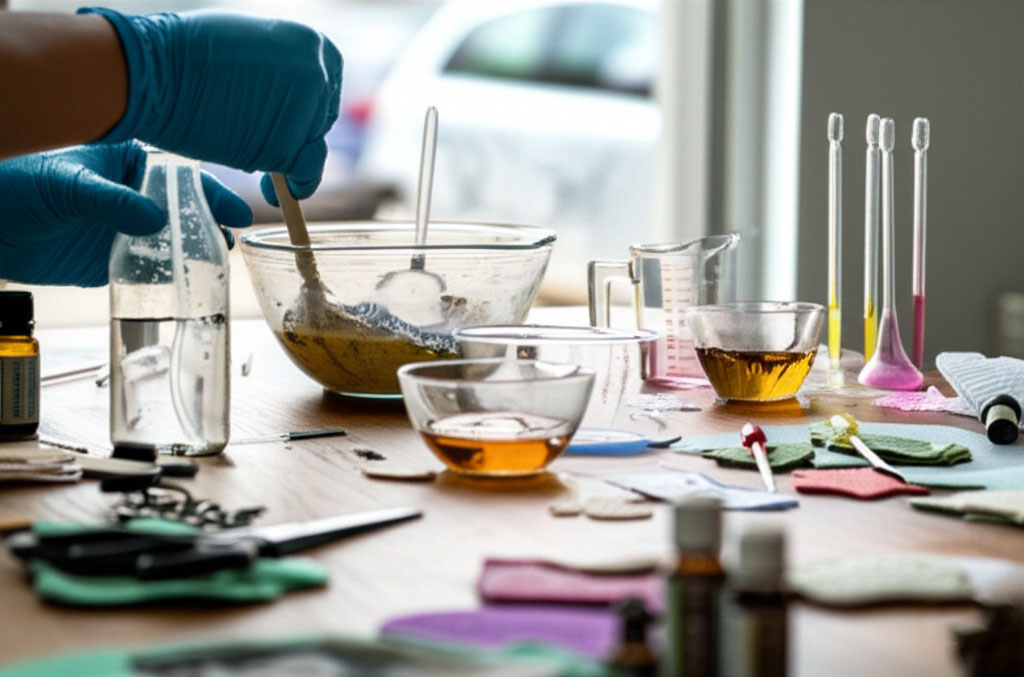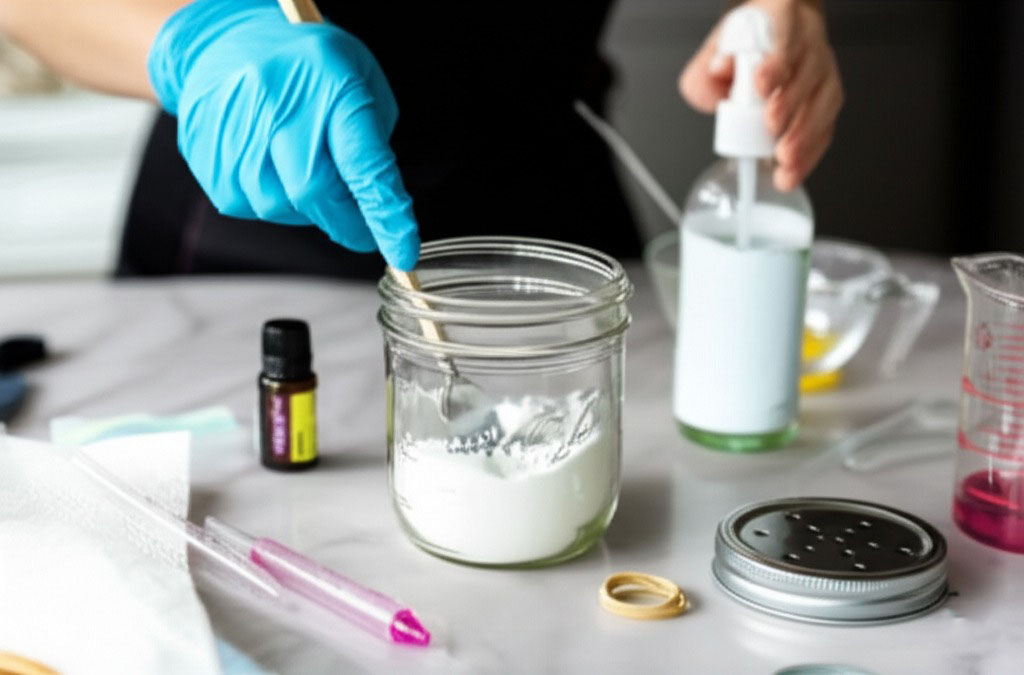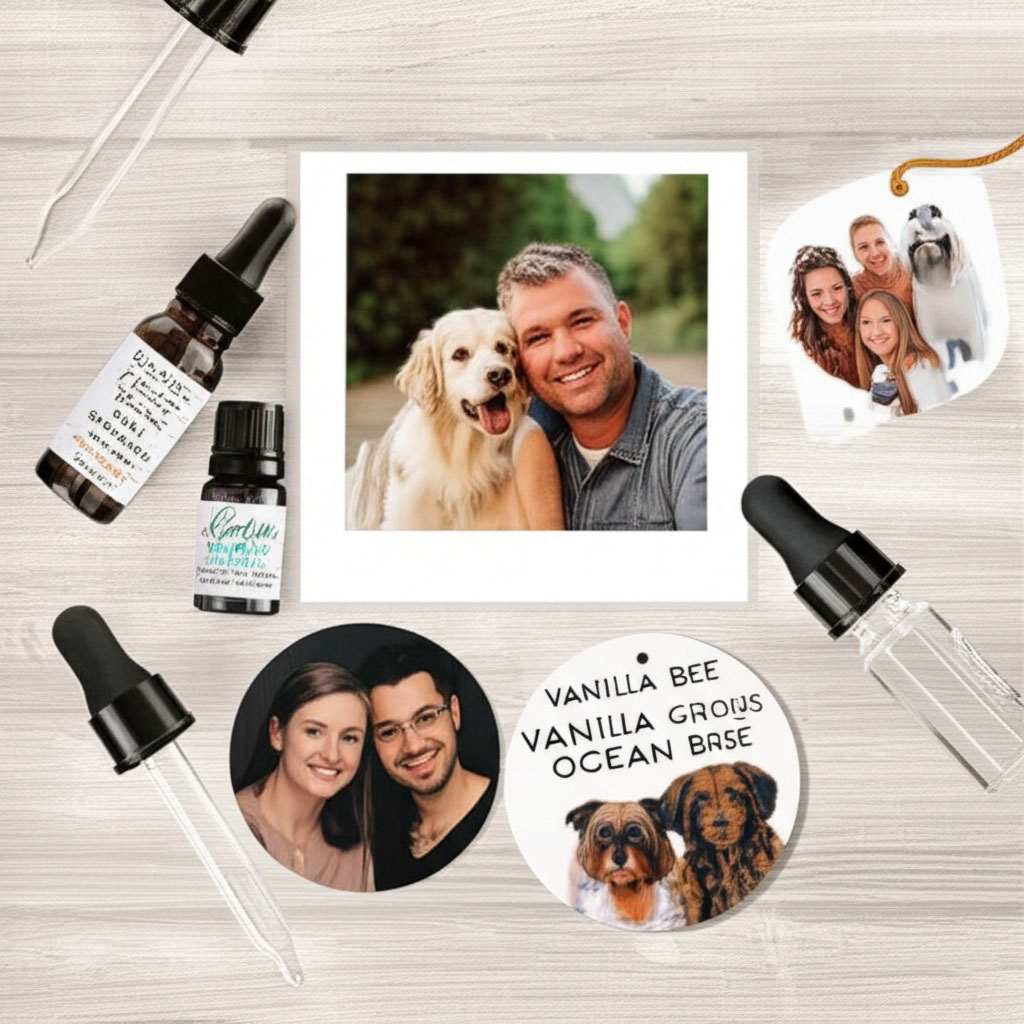How Do You Make Car Air Fresheners?
Table of Contents
“There’s gotta be a better way,” you’re not alone. That’s exactly what this guide is here for. In "How Do You Make Car Air Fresheners?" we’ll walk you through clever, hands-on ways to ditch the store-bought stuff and whip up your own scent boosters at home.

Store air fresheners can smell like a perfume factory exploded. DIY options let you control the vibe—fresh linen, citrus twist, even campfire wood if that’s your thing. Plus, they’re cheaper, more eco-friendly, and honestly, way more fun to make.
As scent expert Mandy Aftel puts it, “Fragrance is memory—liquid emotion.” So why not bottle up something that feels like you and hangs proudly from your rearview?
Materials & Tools
Before you can whip up that perfect car freshener, you gotta stock your DIY bench. Here’s what to gather and where to find it.
Basic tools for air freshener making
Every DIY scent wizard needs a starter kit. Don’t stress—most tools are kitchen staples or dollar-store steals:
Spray bottle – for misting blends
Measuring cups & Mixing bowls – accuracy matters
Funnels & Pipettes – pour without spills
Gloves & Stirring sticks – keep it clean and safe
Labels & Containers – store with style and info
A few beakers or droppers from a craft shop? Total game changers for mixing like a pro.

Where to buy affordable scent oils
No need to break the bank for that dreamy vanilla-lavender combo. Here’s how to sniff out good deals:
Online retailers like Amazon and Etsy often bundle oils for cheap.
Check wholesale suppliers or bulk deals—especially if you’re going all in.
Sign up for sales alerts from craft stores like Michael’s.
Use tools like Honey for coupon codes and auto price comparisons.
"Essential oils don't have to be expensive to be effective," says aromatherapist Carla Elden.
Safety tips for heating and mixing
Let’s not turn your kitchen into a science lab gone wrong. Some quick safety gear and good habits go a long way:
Always work with ventilation—crack a window or use a fan.
Wear gloves and eye protection when dealing with hot wax or oils.
Stick to a low heat source on a heat-resistant surface—no open flames!
Use proper containers rated for high temperatures.
Avoid skin contact and inhalation when mixing strong scents.
And don’t forget: always store flammable materials safely—far from curious kids and pets.
Which Base Works Best: Baking Soda, Wax, or Gel?
Not all scent bases are created equal. Let’s break down how baking soda, wax, and gel compare in performance, mess, and durability.
Scent longevity comparison by base
Fragrance strength and staying power depend a lot on the base. Here's how they stack up:
| Base Type | Average Longevity | Scent Throw Level |
|---|---|---|
| Baking Soda | 1–2 weeks | Mild |
| Wax (Soy) | 2–4 weeks | Moderate |
| Gel (Alcohol) | 3–6 weeks | Strong |
Tip: Oil bases last longer but can feel heavy. Alcohol evaporates faster, giving a quick burst of aroma, while water-based sprays fade fastest.
Texture and mess control factors
Nobody wants goo on their dashboard or crumbs in the cupholder. Here’s the lowdown:
Gel: Higher viscosity = potential spill zone. Best kept in sealed containers.
Wax: Solid but can melt in summer heat. Test on a plate first!
Baking Soda: Crumbly, dusty texture—safe in jars, but messy if dropped.
Choose based on where you'll place it and what surface it touches.
Ideal temperatures for wax vs gel
Gel wax melts at 180–200°F—super hot, so watch the kids and pets.
Soy wax: Safer, melts at 120–135°F.
Paraffin: A little tougher, melts around 130–150°F.
Pro tip: Let both cool to around 120°F before pouring in oils to protect scent integrity. Don’t rush the pour—it ruins both texture and aroma.
Baking soda fresheners for small spaces
These are your go-to for tight spots—cars, closets, even the gym locker.
Just drop 3 tablespoons of baking soda in a small mason jar.
Add 10–15 drops of essential oil (lavender, lemon, etc.).
Cover with breathable fabric or a vented lid.
Boom—odor control with zero hassle. Sodium bicarbonate is a deodorizing beast, especially when paired with citrus or mint oils.
How to Make a Mason Jar Freshener
“I have sold over 500 of these little jar fresheners at weekend markets,” says Claire Turner, a home scent artisan based in Asheville, North Carolina. “People love them because they are cute, reusable, and way less overpowering than the chemical ones from the store.”
A mason jar freshener is not just a project; it is an easy win for clean air and good vibes. All it takes is a clean mason jar, some baking soda, and your favorite essential oils. Claire explains that baking soda acts like a scent sponge, absorbing and slowly releasing the fragrance. Here is what you need:
A small mason jar with a metal jar lid
1/2 cup of baking soda
15–20 drops of essential oils (lavender, eucalyptus, or lemon work great)
A piece of breathable fabric (cotton or burlap)
A rubber band, scissors, and a fork

Mix the baking soda and oils with a fork until the scent is even. Cover the jar with fabric, secure with a rubber band or perforated lid. Some crafters use a drill to poke holes in the metal lid for better scent release.
DIY Wax Sachets
Want something that looks as good as it smells? Wax sachets are the classy, low-effort DIY air fresheners you didn’t know you needed.
Wax blend types for better scent throw
Not all wax is created equal, especially when it comes to getting your scent to fill the space (aka “scent throw”). Here’s a quick breakdown of the best waxes for fragrance:
| Wax Type | Hot Throw Strength | Melting Point (°F) |
|---|---|---|
| Soy Wax | Moderate | 120–125 |
| Paraffin Wax | Strong | 130–140 |
| Coconut Wax | High | 100–110 |
Soy wax is natural but may need stronger fragrance oils.
Paraffin wax has powerful scent throw but isn’t eco-friendly.
Coconut wax is trendy for its creamy texture and clean burn.
Want a stronger “hot throw”? Mix waxes (e.g. soy + paraffin) and add the fragrance at the ideal melting point (usually 180–185°F). Always cure for 24–48 hours before use to lock in the scent.
Adding herbs and dried flowers safely
Using dried flowers and herbs can turn your wax sachets into mini works of art—but there’s a safe way to do it.
Preserve properly – Use well-dried botanicals to avoid mold.
Avoid fire hazards – Don't embed near the wick (if any) or top surface.
Use low-flammability herbs – Think lavender, chamomile, or eucalyptus.
Add after pouring wax – Lightly press into the surface while wax is still soft but not liquid.
What Are Sublimation Fresheners?
“When people ask how I make my car smell like a tropical spa with my dog’s face on a tree-shaped tag, I just say: sublimation printing,” laughs Sarah Mendoza, owner of InkOnRide, a small Etsy shop based in Austin. Sublimation fresheners have taken off lately—personalized, photo-quality, and long-lasting. It is not just about scent anymore. It is scent plus style.
The sublimation process starts with air freshener blanks, often made from thick felt material. These blanks are like the canvas for your creativity. Once you have your design creation ready, it is printed using sublimation ink on transfer paper. Then the magic happens: a heat press transfers the design directly into the fibers through dye sublimation, bonding it permanently. No peeling. No fading.

👉 “It is a game-changer for car merch,” says Jen Lee, product specialist at Sublimation Pros USA, a company that supplies wholesale blanks and inks. “People love full-color personalization, and you are combining two sensory triggers: scent and sight.”
Custom fresheners often use felt for better scent hold.
Scents are applied by soaking or spraying with essential oils or fragrance bases.
Heat settings vary by material—typically 385°F for 60 seconds.
Bestsellers include pet portraits, quotes, and mini selfie gifts.
These are not your gas station pine trees. They are gifts, branding tools, and Etsy gold—boosted by viral TikTok videos and rave customer feedback. Some brands carry awards like the 2024 DIY Design Seal, making them easier to trust.
Scent + print + expression = Sublimation Fresheners 💥
Which Natural Scents Work Best?
Choosing the right scent for your car isn't just about smelling nice—it's about creating a mood that matches your vibe on the road.
Popular essential oils for stress relief
If the daily commute makes you feel like you’ve aged five years, give aromatherapy a shot. Oils like Lavender, Chamomile, and Bergamot are proven stress-busters. Just a few drops in your car diffuser and boom—instant zen zone. Studies suggest that Frankincense and Ylang-Ylang also help regulate breathing and reduce tension.
“Scent is the fastest route to the emotional brain,” says Dr. Alan Hirsch, neurologist and founder of the Smell & Taste Treatment Center.
Fruity blends for summer driving
Roll the windows down, crank your playlist, and let Citrus magic fill the air. These refreshing scents keep your ride feeling light and fun:
Lemon + Lime: crisp and energizing
Orange + Grapefruit: punchy and cheerful
Tangerine + Bergamot: a sweet citrus twist
These blends not only lift your mood but also help keep you alert during long drives. Perfect for road trips or just beating the heat.
How to mix base, middle, and top notes
Blending like a pro isn’t hard if you understand fragrance structure:
Top Notes (first to hit): Lemon, Mint, Lavender
Middle Notes (heart of the scent): Clary Sage, Geranium, Chamomile
Base Notes (linger the longest): Vetiver, Cedarwood, Frankincense
Stick to a 3:5:2 ratio (top:middle:base) for a balanced aroma. Use a carrier oil like jojoba or fractionated coconut if you're going beyond diffusers.
Pet-safe natural scent options
If your furry co-pilot’s tagging along, safety’s key. Some oils are toxic to pets—but don’t worry, you’ve still got good options:
Chamomile (gentle & soothing)
Lavender (only in low doses)
Frankincense and Cedarwood (well-tolerated when diluted)
Avoid tea tree, eucalyptus, and peppermint. When in doubt, hydrosols or floral waters are safer alternatives for diffusing in shared spaces.
Seasonal scent ideas for car interiors
| Season | Top Scents | Vibe Created |
|---|---|---|
| Spring | Floral, Citrus | Fresh & Inviting |
| Summer | Grapefruit, Lime | Bright & Uplifting |
| Fall | Cinnamon, Clove | Cozy & Warm |
| Winter | Pine, Peppermint | Crisp & Comforting |
Match your car interior scent to the season for that extra touch of personality. Fall’s spiced warmth hits different on chilly mornings, while summer citrus keeps things zesty.
Maintenance & Lifespan
Keep your DIY car air fresheners smelling great with minimal effort. These tips help preserve freshness and stretch the life of your favorite scents.
How to refresh scent without rebuilding
Lightly dust fabric or paper shades to remove built-up grime.
Spray a mix of essential oil and distilled water directly onto the shade (don’t soak!).
Sprinkle a pinch of baking soda near air vents to soak up odors.
Use a handheld vacuum to clean the car interior—sometimes it’s not the freshener, it’s the funk.
Open windows and let some airflow do the heavy lifting.
“A clean car is the best canvas for any scent,” says auto detailing expert Chris Morrison.
Shelf life of homemade fresheners
The lifespan of a homemade freshener depends on ingredients, how it’s stored, and the form it takes. Here's a quick breakdown:
| Freshener Type | Avg. Shelf Life | Key Degrading Factor |
|---|---|---|
| Spray Freshener | 2–3 weeks | Essential oil evaporation |
| Sachet Freshener | 4–6 weeks | Fabric absorption loss |
| Baking Soda Jar | 1–2 months | Loss of odor-trapping power |
Conclusion
Now that you’ve got the tools and tricks, making your own car air fresheners is no longer some Pinterest pipe dream—it’s doable, cheap, and kinda fun. You've learned how to ditch those chemical-loaded store-bought ones and make scents that actually match your vibe.
As perfumer Roja Dove puts it, “Scent is the most powerful form of memory.” So why not fill your ride with something that feels like home?
Pick one method, give it a spin, and let your car smell like you—not a vanilla-scented factory.
You want oils that smell great but also hold up under heat. Popular picks include:
Just avoid oils that are too subtle—they’ll vanish fast in a hot car.
Peppermint – fresh, sharp, energizing
Lemon – clean and uplifting
Lavender – calming and stress-relieving
Eucalyptus – good for clearing airways
Cedarwood – warm and woodsy
Yep! You can use fragrance oils (more affordable, stronger scent) or even kitchen items like cinnamon sticks, coffee grounds, or dried citrus peels. Just keep in mind, the scent throw might be milder.
It depends on the base and ingredients used, but here’s a ballpark:
You can always recharge them with a few fresh drops of oil.
Wax sachets: 2–4 weeks
Gel fresheners: 2–3 weeks
Baking soda jars: 1–2 weeks before fading
Felt or cardboard hangers: Up to 10 days
A small mason jar with a vented lid works best. You can poke holes in a metal lid or stretch fabric or cheesecloth over the top with a rubber band. Just make sure air can circulate, or the scent won’t go anywhere.
Definitely. One bottle of essential oil (around $7–$10) can make dozens of fresheners. Plus, you probably already have baking soda, jars, or felt lying around. DIY fresheners cost cents, not dollars.
Some essential oils are toxic to cats and dogs, especially in enclosed spaces. If you’re driving with pets often, stick to:
Avoid tea tree, eucalyptus, and citrus oils unless cleared by a vet.
Chamomile
Ginger
Cedarwood (in moderation)
Here are your top DIY base options:
Each one offers a different vibe and longevity.
Baking soda – absorbs odors, cheap and easy
Soy/beeswax – holds scent well and looks cute
Gelatin-based gel – great for cup holders
Cardboard or felt – perfect for hanging designs
Totally! Most styles can be refreshed with a few drops of oil once they start fading. Just don’t overdo it—you want fresh, not overpowering.
Oh yes. Heat can intensify the scent but also cause it to burn off faster. Cold temps slow down diffusion. So if your freshener smells great one day and fades fast the next? Blame the weather.

Leave a comment